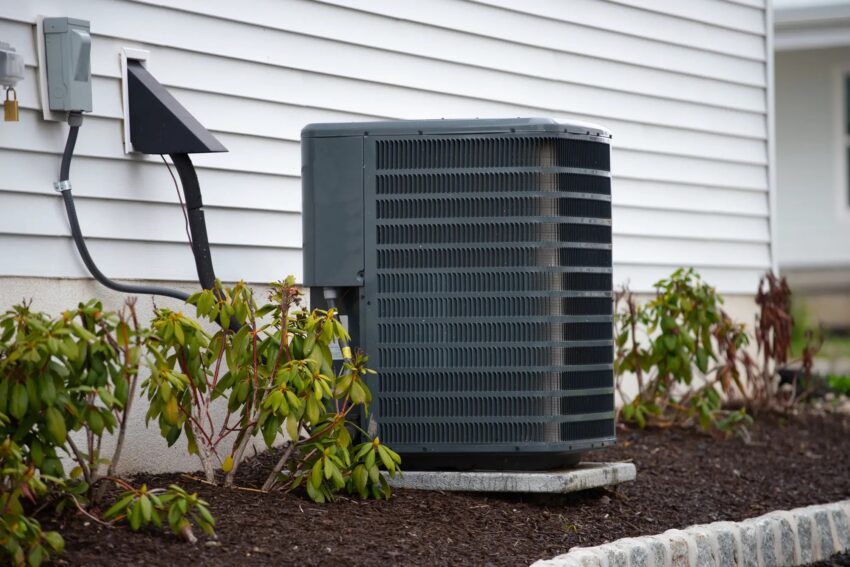The average central AC unit costs $5,800, with most homeowners paying between $5,000 and $11,000. We’re going over the factors that influence the cost of AC units, including the different types available and how to tell when it’s time to get a new system.
Factors in Calculating Central AC Unit Cost
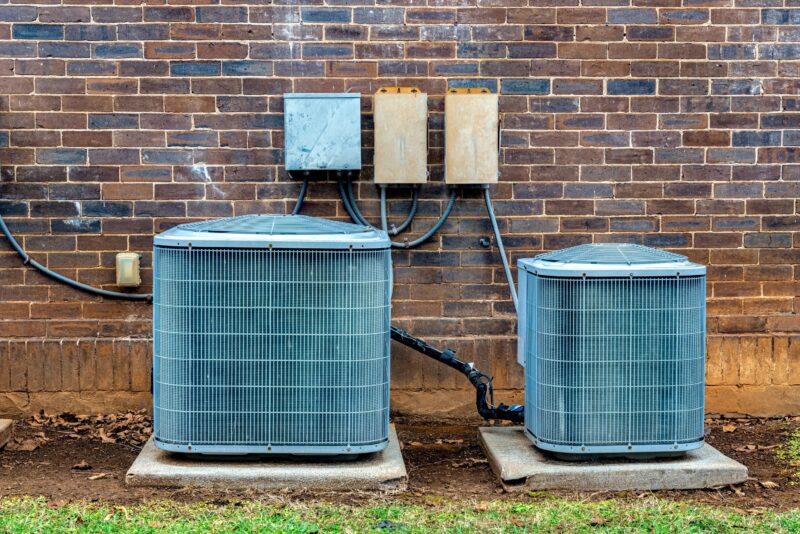
Several variables influence the cost of central air conditioning units. Most of these variables will depend on the price of the unit, the size of your home, and your heating and cooling needs. Take a look at the following factors that can affect the cost of getting a new central AC system for your home.
Size and Cooling Capacity (BTU)
The size and capacity of AC units are measured in tons. One ton of air conditioning can remove 12,000 BTU per hour to cool about 500 to 600 square feet.
Your home’s layout, your local climate, and the insulation levels in your home all determine how much cooling capacity you need to keep your house at a comfortable temperature.
Brand and Manufacturer Differences
Many different companies manufacture air conditioning units. Some notable AC brands include York, American Standard, Trane, and Carrier. These companies offer high-quality AC units in the $4,800 to $5,000 range, with other brands like Lennox, Goodman, and Rheem offering more affordable units at about half the price.
Does the brand matter in air conditioners? Top-tier brand names make their products with quality materials and have stringent installation guidelines. The availability of parts can also significantly affect cost when paying for repairs, and these popular AC brands have easily available parts.
SEER Rating (Energy Efficiency)
The SEER rating is a critical factor in the cost of a new central air unit. All new AC units have a Seasonal Energy Efficiency Ratio (SEER) of 13 to 26.
Most top-name brands offer models with various SEER ratings to compete on various price points, but generally, the higher the SEER rating, the more energy-efficient the model and the more the AC unit will cost.
Technological Features
Technology is advancing in every industry, and the heating and cooling industry is no exception. New technologies like geothermal heat pump technology can significantly reduce energy needs.
While the upfront costs for new technologies are considerably higher, these units can pay for themselves in energy savings. If reducing your carbon footprint is your priority, the initial expense combined with the long-term savings will be worth every penny.
Additional Costs and Considerations
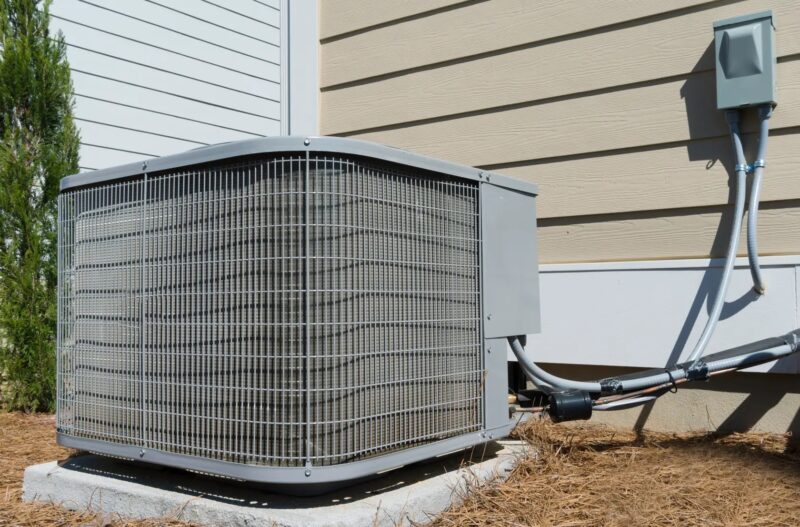
Ductwork Modifications
An old or leaky duct system can put too much strain on a new AC unit, so it won’t perform any better than your old one. Depending on the condition of your ductwork, your installer may recommend new or modified ducting for a new central AC unit.
Required Electrical Upgrades
Homes require at least a 200 amp service to accommodate a central AC unit system. 100 amp service panels were standard in older homes, and while they may be adequate for other purposes, they won’t support a modern central AC unit.
Warranty Options and Maintenance Plans
Most central AC units are covered for parts and service for 10 to 15 years as long as the terms and conditions of the warranty are met. You may not need to worry about extended warranties and maintenance plans if you purchase a reputable brand.
The cost of extended warranties varies depending on the brand, the installer, and the coverage provider. Generally, the cost is most closely associated with the number of years of protection.
Local Climate
Your local climate will determine the size of the central AC unit your home needs and how often it will operate. Your installer will use an AC size calculator map to determine the size of the AC unit you need depending on your home’s size and climate zone.
Problems arise from purchasing an AC unit that’s either too big or too small for your home, and an HVAC professional will consider several factors when determining the right one for your home.
Building Code Requirements
In many municipalities, installing a central AC unit requires a permit to ensure that building codes are met. Since climate affects energy usage, the building code requirements in your region are defined to reduce the energy requirements of homes in your region.
Ask your service provider if you have questions about how building code requirements could affect your central AC installation cost.
Central AC Unit Cost by Type of Unit
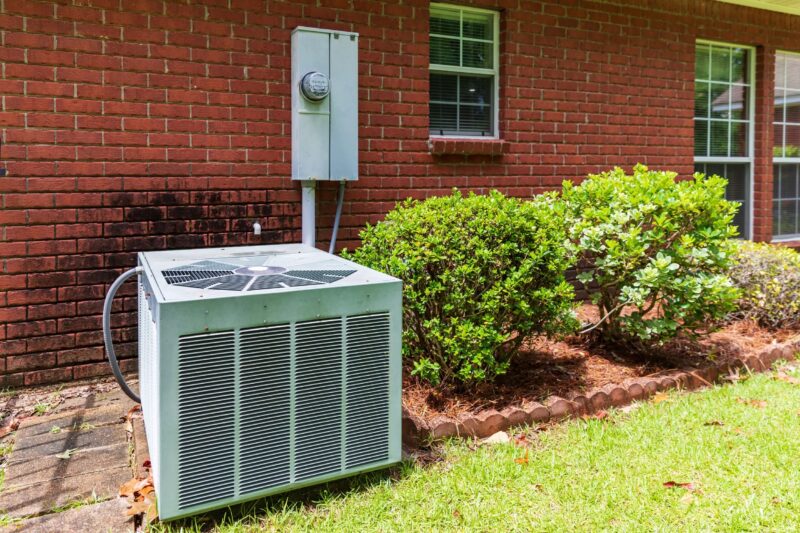
Split Systems
Split systems and packaged air conditioners are the two types of central AC units. These systems are the most common AC system in the United States.
Components and Typical Price Range
In split systems, the outdoor cabinet contains the compressor, and the indoor cabinet contains the indoor heat exchanger and a blower.
| Split system size in BTUs/tons | Unit cost |
| 12,000 / 1 ton | $700 to $3,200 |
| 18,000 / 1.5 ton | $1,000 to $4,200 |
| 24,000 / 2 ton | $1,100 to $5,200 |
| 36,000 / 3 ton | $1,800 to $6,000 |
| 48,000 / 4 ton | $3,500 to $7,500 |
| 60,000 / 5 ton | $4,000 to $8,000 |
Split AC systems are more efficient than packaged units, offering more flexibility for cooling various parts of your home. If you already have ducting in your home or a crawlspace or basement to install new ducting, a split system is the best choice.
Packaged Systems
Packaged systems contain all components in one unit, making them perfect for saving space. They are usually installed on the roof or the ground outside, but sometimes they can be placed indoors. They are commonly used in small commercial buildings.
Packaged units are less expensive than split system AC units because installing them takes less time.
Installation Considerations
Even when packaged units are installed outdoors, they are controlled from inside your home. Packaged central air installation is best for homes without crawl spaces or basements and little indoor space.
Heat Pumps
Heat pump central AC systems are relatively new technology. There are two types of heat pump systems for air conditioning, including air-source and geothermal systems. They use the same basic technology that a refrigerator uses to extract heat from one area and transfer it to another.
Price Range and Energy Efficiency
Geothermal heat pump AC units are the most efficient type because of the consistent temperature of the earth. However, these systems are comparably much more expensive.
| Heat pump AC unit | Unit cost |
| Air-source heat pump | $4,000 to $8,000 installed |
| Geothermal heat pump | $15,000 to $40,000 installed |
Dual Heating and Cooling Benefits
Heat pumps can heat your home in the winter and cool it in the summer. The advantage of combining your heating and cooling in one unit is that it reduces the installation and maintenance costs of heating and air conditioning.
Signs I Need to Add or Replace My Central AC Unit
How can you tell when it’s time to upgrade to a central AC unit or replace your existing one? Here’s what to look for:
- Age of the existing unit– If your central AC unit is 10 years or older, it may be time to replace it with a more efficient model.
- Declining efficiency and rising energy bills– If your electric bill keeps going up, but your house isn’t as comfortable as it used to be, that’s a sign you need a new AC.
- Frequent repairs and breakdowns– Average annual maintenance costs for an AC unit are $100 to $200. If they’re more than that, consider upgrading.
- Uneven cooling and noise issues– If your AC unit is making weird noises, it’s a sign that it’s not working as well as it used to.
Pros and Cons of DIY vs. Hiring a Professional for Installation
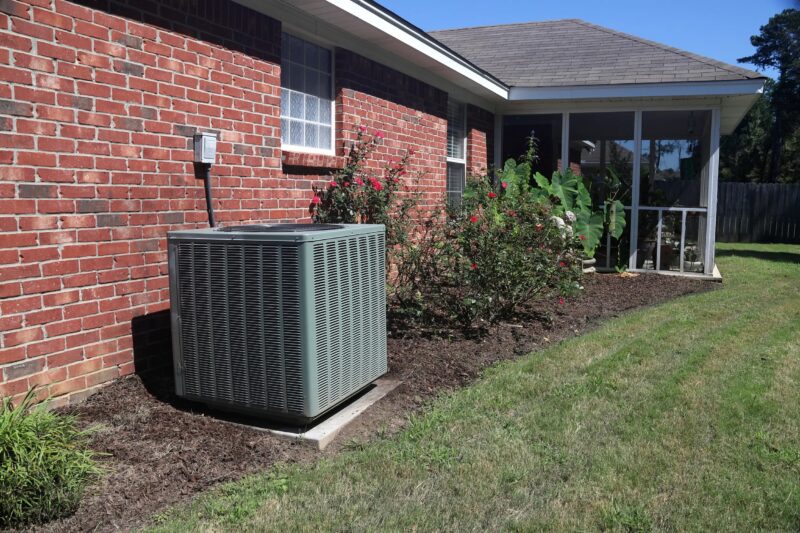
Hiring a professional can be much more expensive in the long run, but it’s worth it to take advantage of product warranties and maintenance packages.
The DIY approach can save money but has its challenges. For instance, you could make serious and costly mistakes, and there are also safety hazards and warranty concerns with DIY installations.
Installing central AC units is usually best left to professionals. HVAC professionals are highly trained and skilled, and they have the experience to properly size and install the right system for your home.
How to Save Money on Central AC Unit Cost
Here are some money-saving tips for air conditioning replacement and repairs:
- Seasonal discounts and manufacturer rebates– Ask your installer about seasonal discounts and visit manufacturer websites for information about rebates.
- Tax credits and energy-efficient options– Federal income tax credits for new central AC units are available through the year 2032. Visit the Energy Star web page for more information.
- Maintenance for prolonged efficiency– Ask your installer about maintenance packages when you get a new central AC unit. Twice yearly service is recommended to keep your AC unit performing in top condition.
- Opting for slightly older models– Your installer may be able to offer you a slightly older model at a significant discount. Even though it’s still brand new, it will cost less if it’s an older generation.
Weighing the Investment in a Central AC System
Investing in a central AC unit for your home requires careful consideration. You have to balance the cost of a central AC unit over the long term, compare the savings offered by more efficient models, and determine if it’s a necessary expense.
Depending on your preferences, the climate where you live, and the size of your home, a central AC unit can be worth it for the extra comfort it provides, and it’s likely it will reduce your home’s energy consumption.
Frequently Asked Questions About Central AC Unit Installation
How often should I service my central AC unit?
You should service an AC unit twice yearly. Servicing your air conditioner once in the spring and once in the fall will ensure that it’s clean and everything is working correctly.
What is the average lifespan of a central AC system?
The average lifespan of a central AC system is 15 to 20 years. Many extended warranties start at 10 years, but some models come with 20-year warranties. Both Goodman and Amana brands offer limited lifetime warranties for AC compressors.
How do SEER ratings impact my energy bills?
The higher your AC unit’s SEER ratings, the higher your savings. SEER ratings for new central AC units are between 13 and 26, and most recommend a SEER rating of at least 14.
Several factors determine how much you can save with a higher SEER rating, including the size of your unit and how many hours per year you operate it. Use an online SEER HVAC efficiency calculator to calculate savings for your central AC unit.
Can I install a new unit with existing ductwork?
If your ductwork is in good condition, you can install a new unit without replacing the ducting. However, if the ductwork is older than ten years, it can hinder the efficiency of your AC unit.
Is it necessary to have regular maintenance for a newer AC unit?
Properly maintaining your new AC unit from the start will ensure that it lasts many years. Neglecting maintenance at any point will lead to system failures and steadily declining performance of your unit.

